How to Land Your Startup’s First Customer (What Worked for Us)

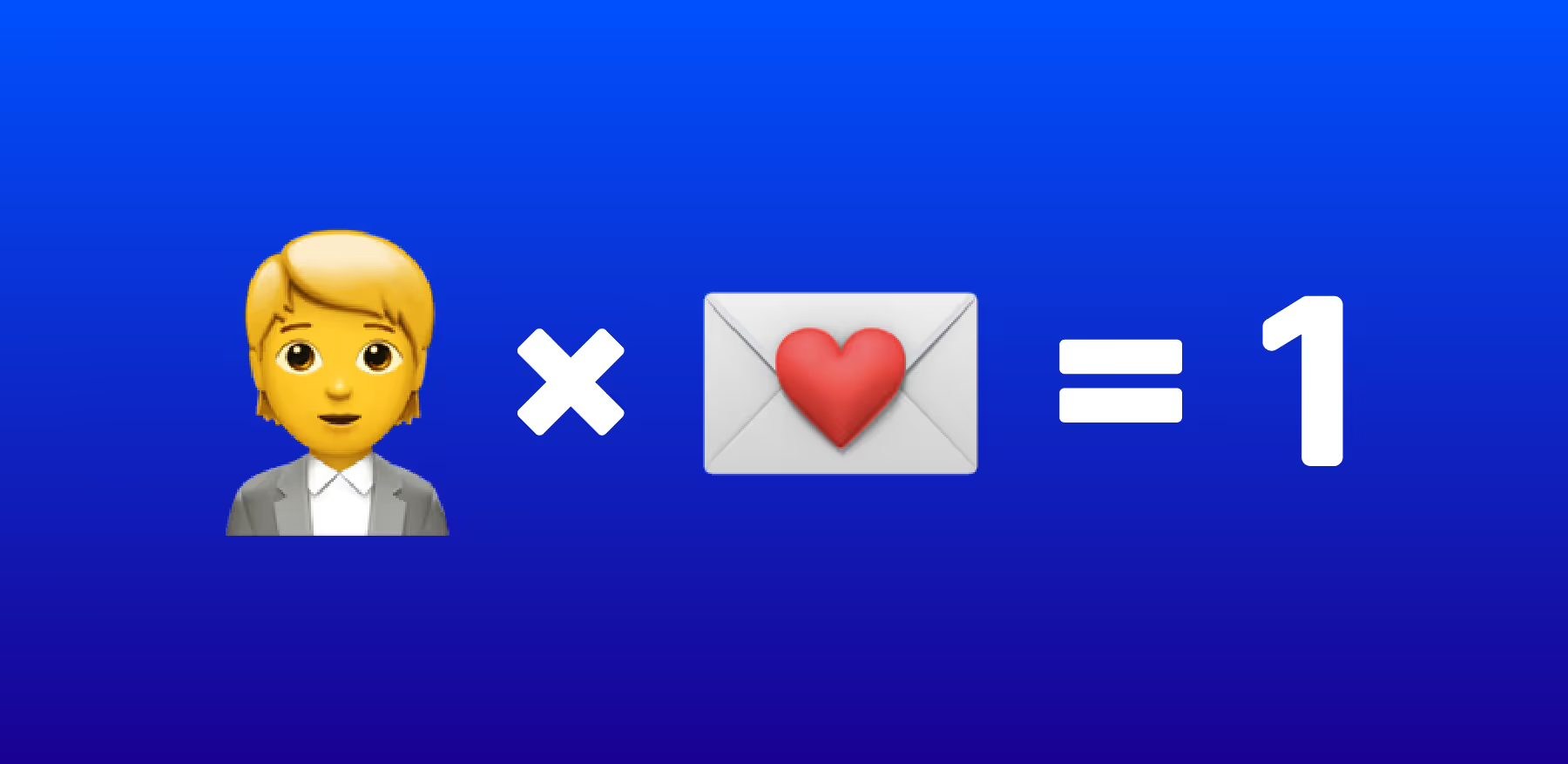
When you're scaling a startup, acquiring customers is the most important skill you can have.
If you're struggling to acquire customers, you're likely going to struggle in all other aspects of your business.
So how do you actually land your first customer?
Well, there are lots of different strategies, but I'm going to share what worked for us here at LeadLoft.
Now, let's dive into it.
How did we land our first customers?
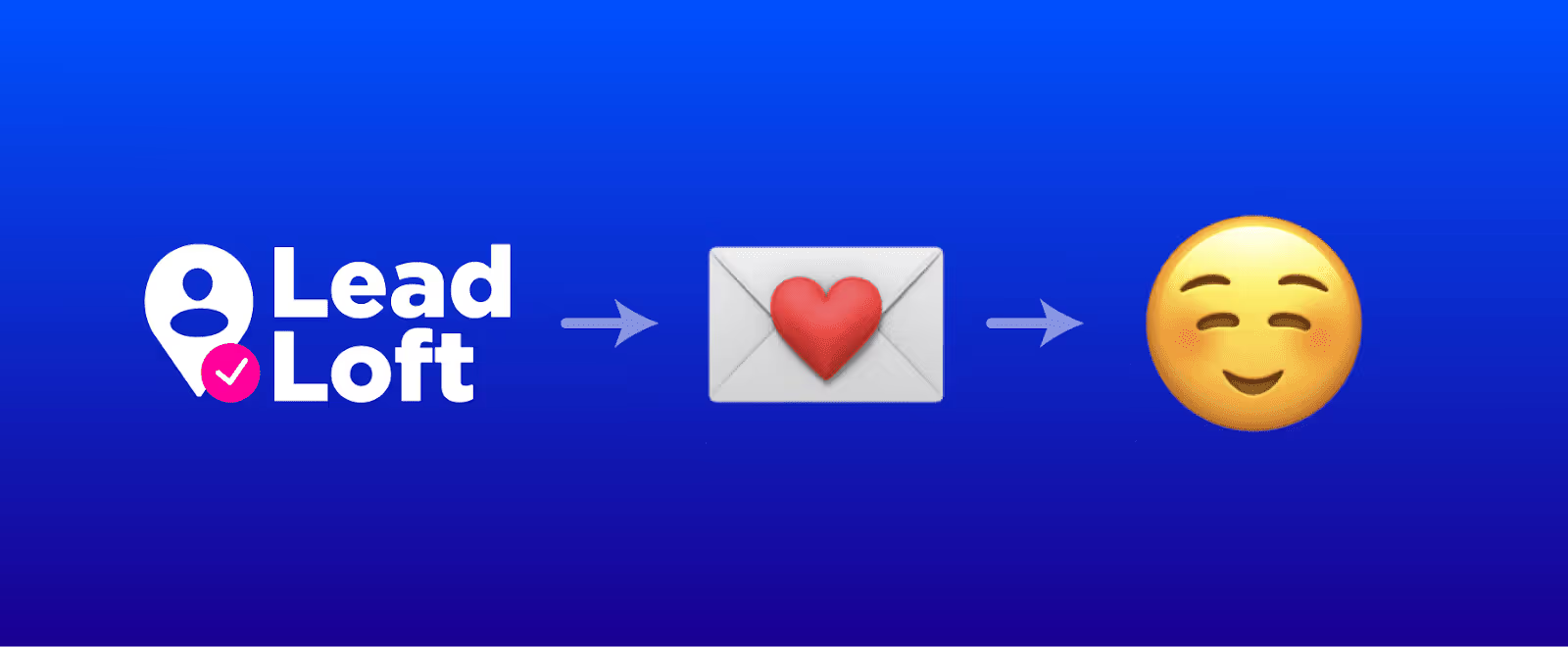
When we first started LeadLoft, it was just a simple LinkedIn prospecting tool with virtually no website traffic.
Sure, there were maybe a couple hundred visitors here and there, but to be honest, most of that traffic came from our sales efforts that spilled over into website visits.
And when you have no website traffic, the only option you really have is to reach out to potential customers and try to get them on a call.
Since I had a lot of experience running cold email campaigns on behalf of a sales team at a previous company, we started with what I knew: cold email.
As a result of our cold email campaigns, we actually landed two $6,000 customers for a total of $12,000 in our first month.
So in short, we acquired LeadLoft’s first customers by sending cold emails to prospects we knew were struggling with lead generation.
But cold email has changed quite a bit over the years, and it's definitely a lot more difficult to make it work nowadays than it was five years ago.
So let's run through other tactics you can use to acquire your first customers at your startup.
We'll also be ranking these top down, starting with the tactics that have generated the most customers for LeadLoft.
And to be clear, some of these tactics were a complete failure for us, and we no longer run them, or at least we're experimenting with different versions of them.
1) Cold Email & LinkedIn Outreach

Cold email and LinkedIn automation are easily the most valuable channels for LeadLoft.
At some point in our history, more than 90% of all of our customers came from cold emails, which is pretty incredible in my opinion.
But like I mentioned earlier, cold email has become more difficult.
Since LeadLoft now supports LinkedIn outreach, we've also taken it upon ourselves to run cold email and LinkedIn outreach in tandem. And now we’ve found tons of success from both these channels.
Oftentimes, if somebody doesn't respond to a cold email, they'll respond on LinkedIn.
And some of our campaigns even reach response rates as high as 50% plus, although we average somewhere in the range of 40%.
Regardless, this channel allows you to select who you want to talk with and book meetings with them. And this is why i think it’s so valuable.
Website traffic is great but there’s a lot of useless traffic that comes with it. When it comes to cold outreach, every prospect is qualified by default.
So if your team doesn't have a lot of website traffic and is looking to acquire customers, running cold email and LinkedIn outreach in tandem is something I strongly recommend.
If you want to learn how to do this, we share our own internal tactics here so feel free to check it out.
2) Customer Referrals

The next tactic that we've found tons of success with is customer referrals.
And to be honest, we've tried to get more customers to refer more people to us, but it's kind of difficult to push them over the line and actually get them to introduce somebody.
As a result, this channel isn't super consistent and doesn't provide a lot of volume.
However, I would say when somebody is referred to us, the odds that they close is close to 80% or 90%.
It has the highest close rate of any source we have, so if you can find a way to incentivize your customers to refer more leads to you, it's a channel I strongly recommend investing some time into.
Even now, we're building out some new features to double down on our customer referral channel.
3) Partner Programs

Another great channel we've found to work is partner programs.
This includes working with a partner who either manages companies on the LeadLoft platform or simply pays us to manage clients for them.
This is pretty amazing because it's essentially a workaround to expanding your sales team without actually having to pay a salary.
So instead of you hiring a large sales team, you can simply expand your partner program, and each new partner that joins your team operates like a salesperson for your product.
This is another channel that takes some time to build out, and you really have to invest in features that are designed for it.
Even now, we're pretty aware that LeadLoft lacks a lot of necessary features to make this a really viable channel, but we are investing a lot of time and resources into making LeadLoft an even better tool for our partners.
So we hope by the end of this year or early next year, LeadLoft will be well designed to support our partners, and we think this channel is going to work out great for us as we go on into the future.
4) Lead Magnets + Enrichment + Outbound
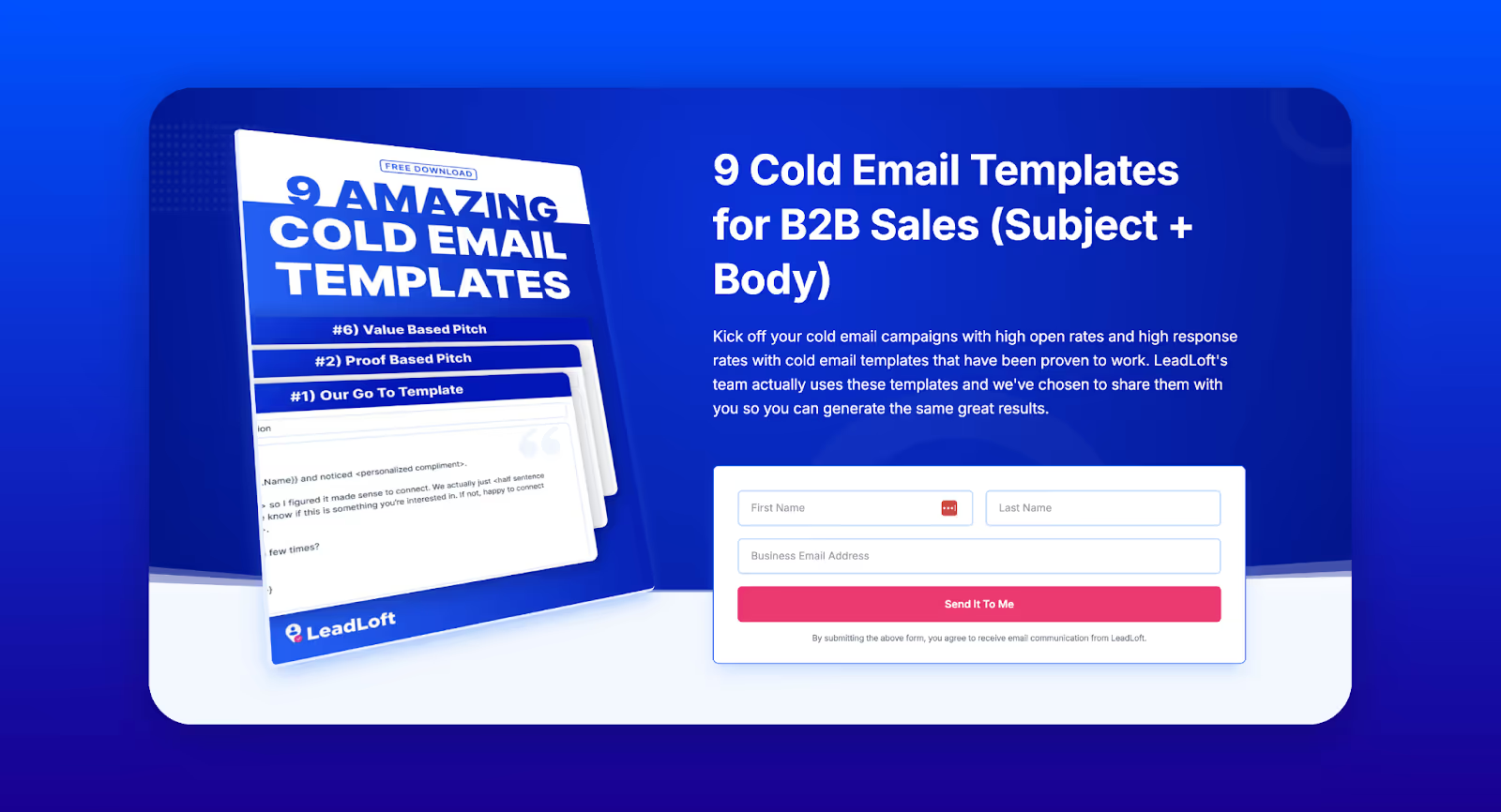
Another interesting tactic that we've found to work is capturing leads using lead magnets that contain super valuable resources like free cold email templates. Then going on to enrich these leads, and lastly engage them with outreach automation across email and LinkedIn.
This is an awesome approach if cold outreach is yielding no results for you at the moment.
The reason this works so well is because the lead magnet the lead has downloaded generally shows some level of intent, making them a more qualified lead.
For us, we see some of our highest response rates coming from these lead magnet leads, so it's something we definitely recommend you check out.
The only downside of this is that if you don't have organic web traffic downloading these leads, you may be forced to invest in digital ads like Google Ads to get more lead magnet submissions.
So just keep that in mind when you're building out this inbound outbound lead generation process.
5) Comparison Pages
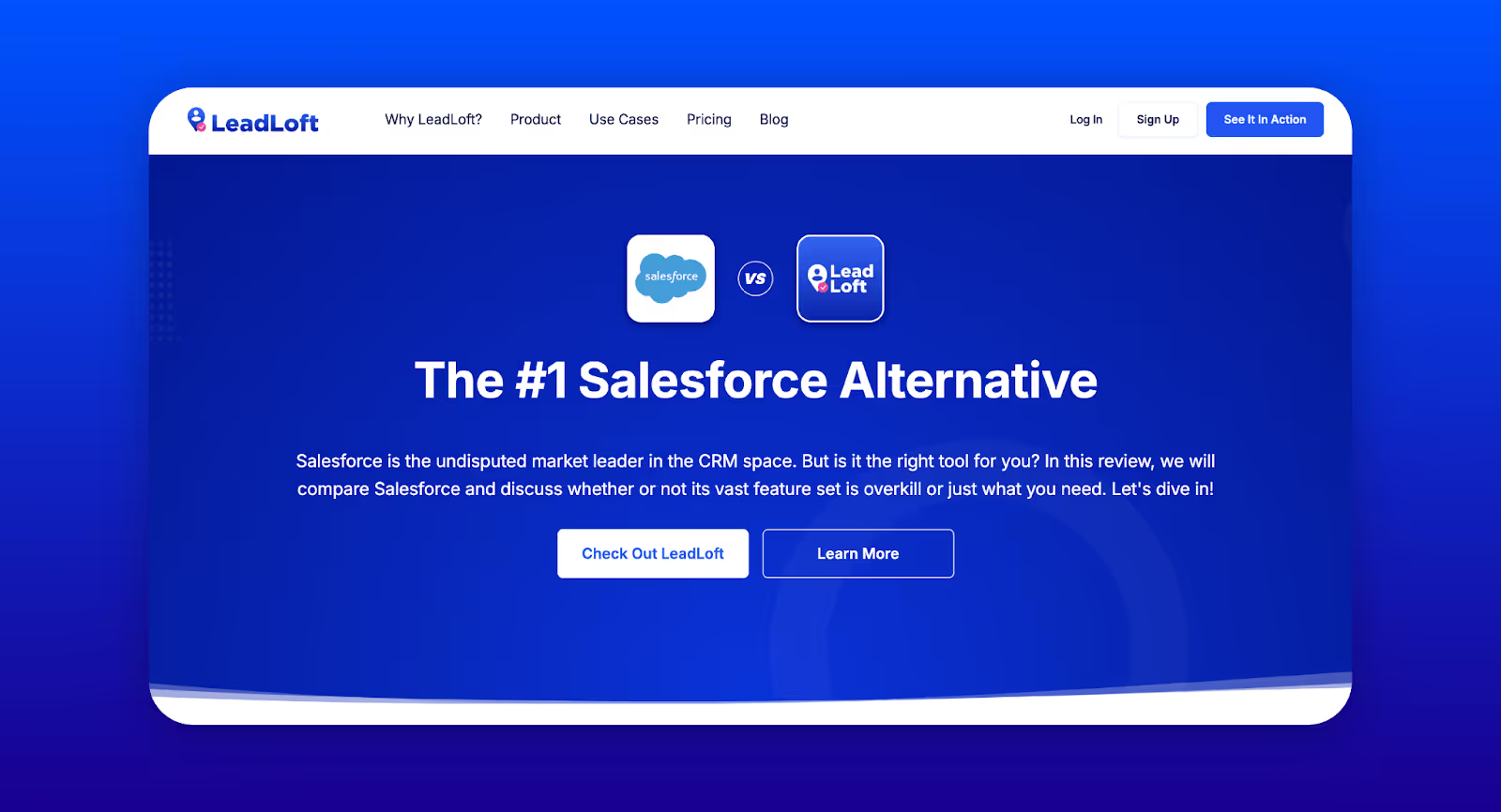
Comparison pages are another awesome tool in your arsenal.
We've chosen to invest quite a bit of time into comparing LeadLoft to all the competitors out there.
And we compare ourselves to a massive range of tools, from CRM software like Salesforce to lead generation software like Outreach.io.
We want to compare ourselves to as many tools as possible so when somebody searches for an alternative to those solutions, LeadLoft shows up in their search results.
And what's great about comparison pages is you're capturing leads who are pretty deep into the research phase of their buying workflow.
This means they're more likely to pull the trigger soon, as they're looking at features or comparing tools and they're preparing to actually make a purchase.
And this is a pretty common tactic nowadays, and I would recommend it to almost every company out there to set up some comparison pages to compare yourself to your most popular competitors.
And if you're a little bit more sophisticated, compare yourself to all your competitors, and you can hide those less important pages.
6) Blog Articles
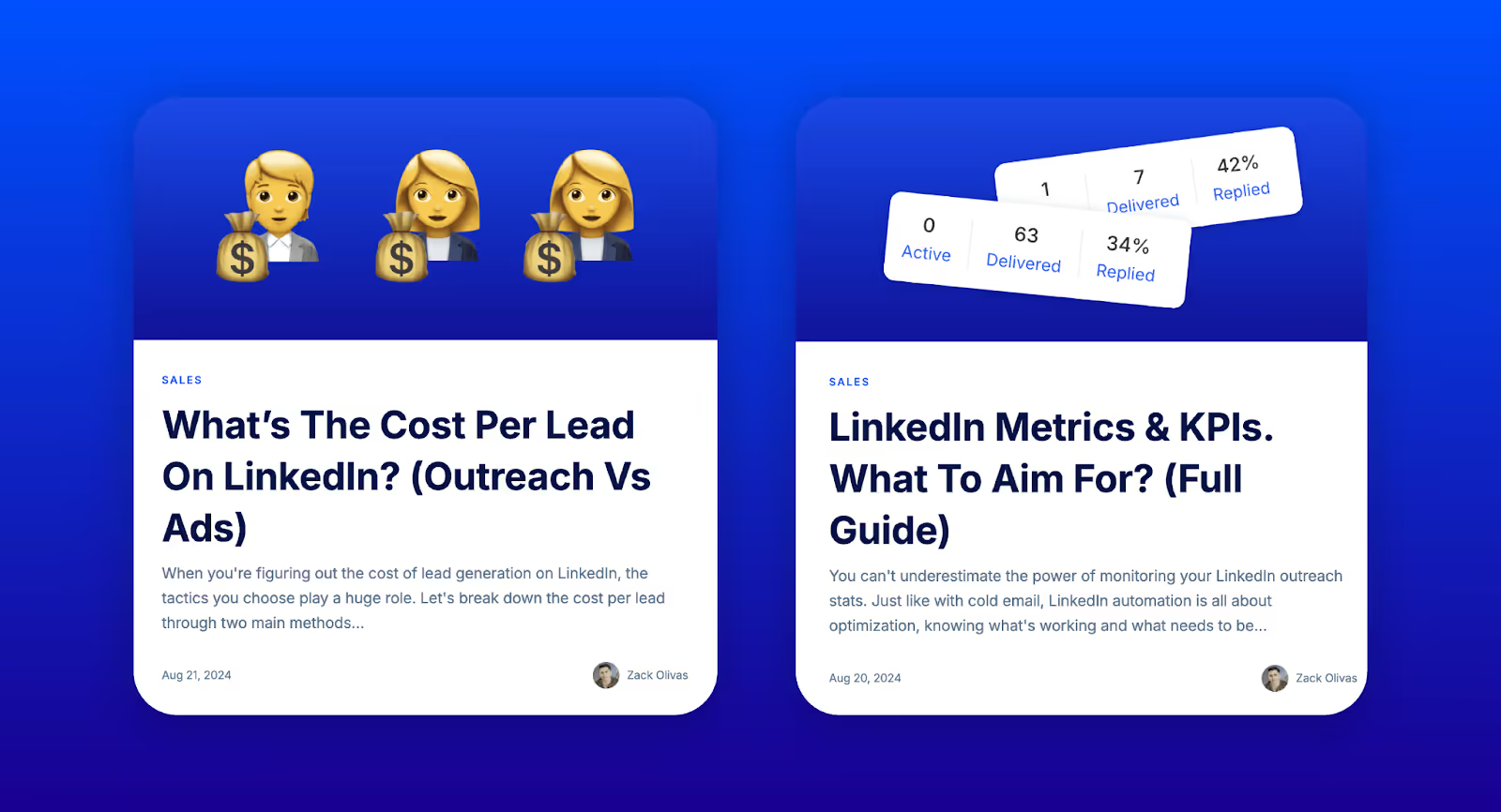
Blog articles are another awesome channel that we’ve invested a lot of time into.
In fact, as time has gone on, LeadLoft’st Sales Blog has actually eaten away at a large percentage of the cold email and LinkedIn customers, now becoming somewhere in the range of 30% of all new customers at LeadLoft.
And with blog articles being such an important aspect to LeadLoft, you might be asking yourself, why is it so low on this list?
Well, blog articles take a lot of time to build and a lot of time to rank.
You really have no idea how well they're working until six months or a year after you've written articles, and it might even take you six months or a year to write enough articles to begin seeing results.
Yeah, one article might get you a result here or there, but it's really difficult to see consistent revenue or consistent results when there's only 10, 20, or even 30 articles.
To make blogs work, you really need more than 100 articles on your website that are well written, well designed, and service your ideal customers.
So I strongly recommend you begin writing blog articles, but just don't rely on it to get your first customers or even your first 100 customers.
7) YouTube Videos
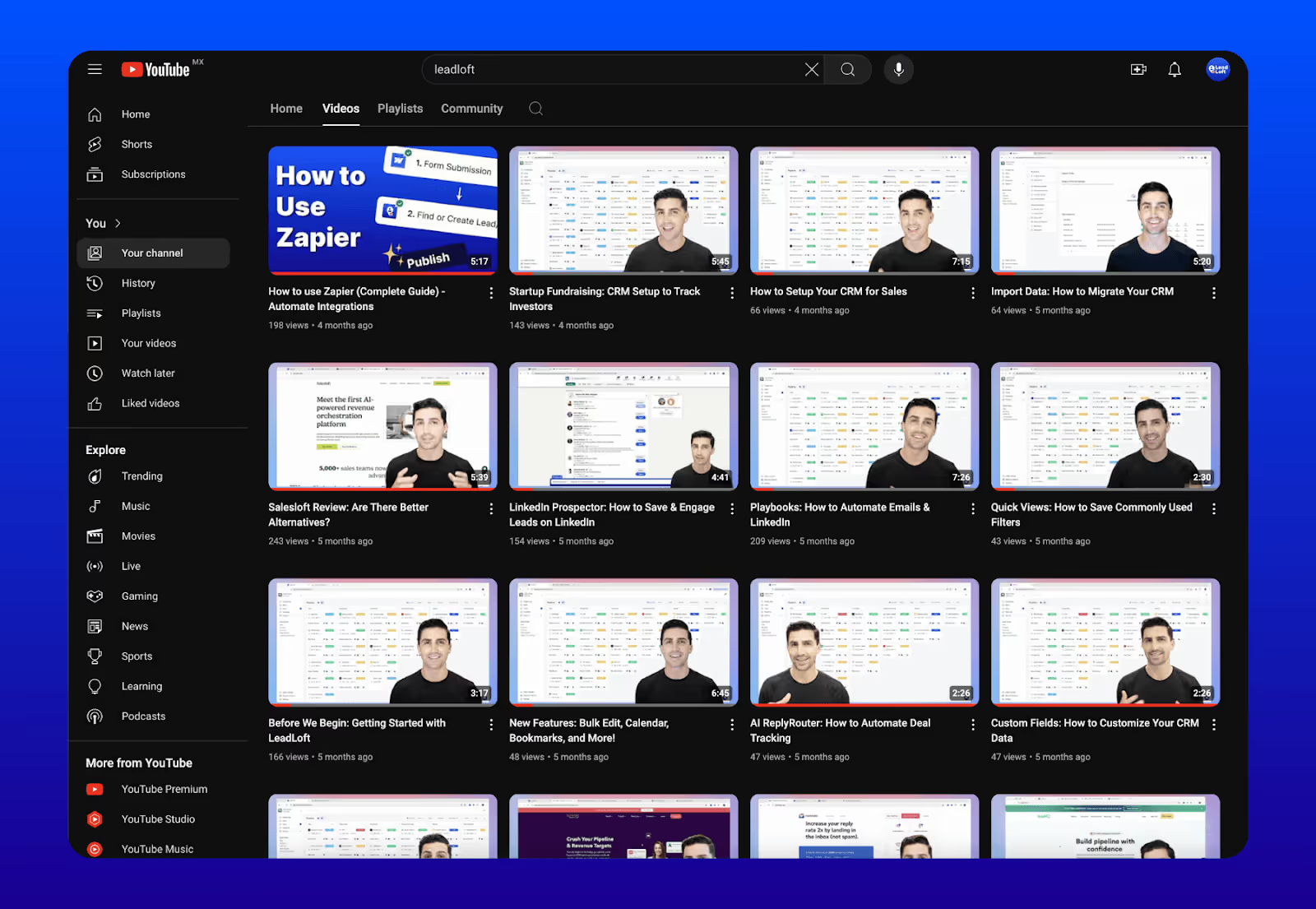
YouTube videos have been a pretty great channel for us, and we're starting to see more and more traffic come from LeadLoft’s Youtube channel.
However, creating YouTube videos is pretty hard and significantly harder than writing blog articles.
Not to mention the amount of time that goes into editing and making sure it looks nice.
So if you're going to push YouTube videos, that's great, but think of it as a channel that's similar to blog articles in that it's going to take a lot of time to build each video and even more time to see results from those videos.
Nevertheless, I think it's one of the most untapped channels in B2B and B2C, as it's one of the largest search engines in the world, and most people are not building content for it.
8) LinkedIn Ads
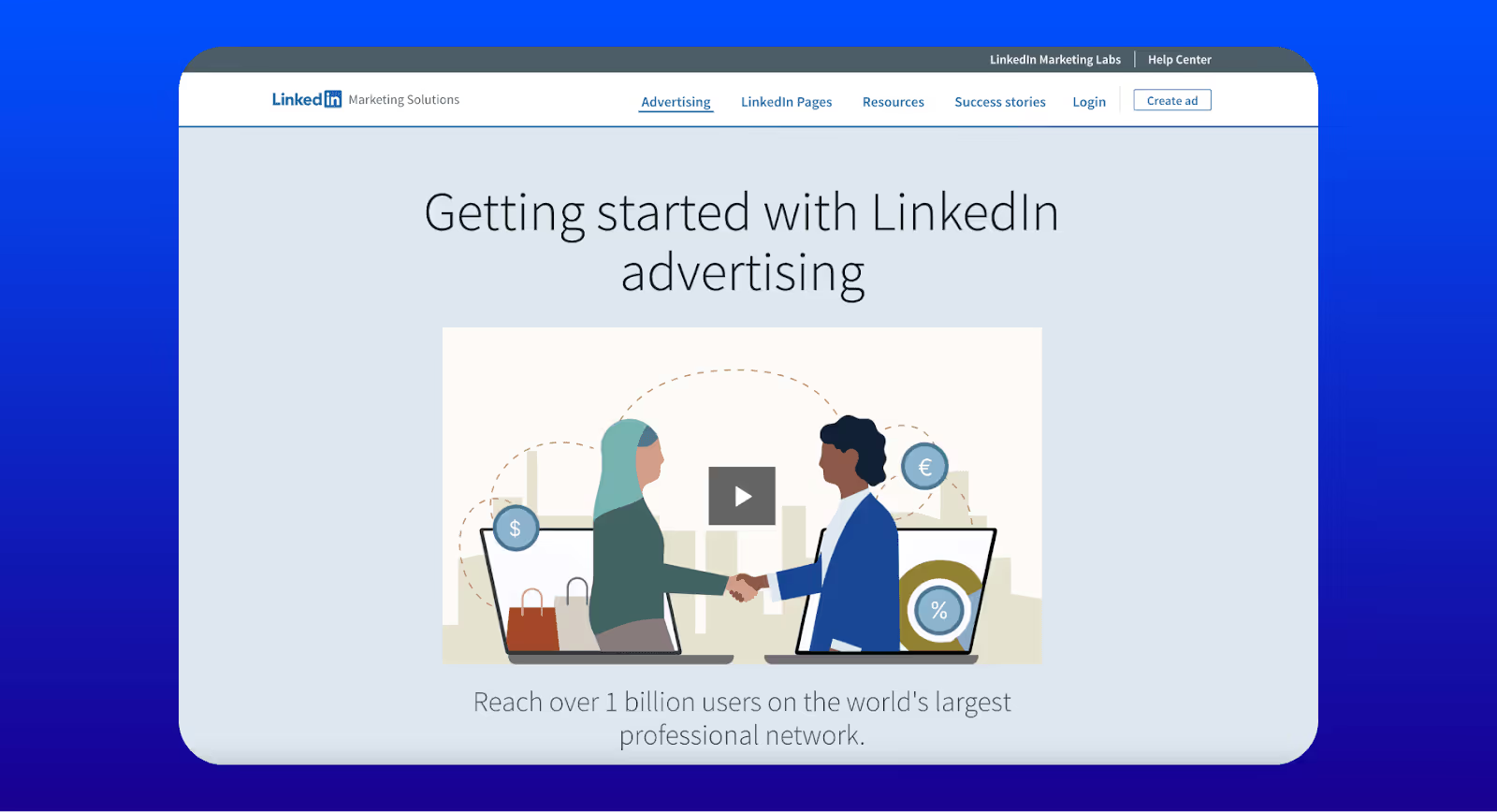
LinkedIn Ads, specifically LinkedIn InMail Ads, is a channel and format I personally love.
Not only do we use it to retarget leads that we're running cold outreach to, but we also use it for prospecting.
If you are running cold outreach using a tool like LeadLoft, for example, I would recommend that you export all those leads, or if you're more sophisticated, set up an automation to automatically add those leads to an audience within your LinkedIn Ads account, and then run retargeting ads to those leads.
This is a really sophisticated approach to running cold outreach, but it's something that we've found tons of success with.
The only downside of LinkedIn Ads is it can get a little bit expensive.
So if you're a startup, you can consider running retargeting ads because they'll be more affordable.
However, when you first get started, your target audience and your retargeting audience will likely be too small to target within LinkedIn at all.
And for this reason, it's pretty low on the list.
But it's something I recommend you keep in mind as your company scales because it's a really nice channel to add on top of the other tactics on this page.
9) Google Ads

Google Ads is probably the channel I'll be most careful about as a startup.
It tends to have a lot of low quality leads and a lot of spam, and it's really hard to get right.
However, I do believe it's really great for retargeting, and it can be great for bidding on really specific key terms.
But when it comes to optimizing return on investment, it's probably one of the hardest channels to make work, and I would recommend staying away from it entirely until you have at least 100 or more customers.
10) Email Marketing (Newsletter)

Email marketing is another amazing channel, but just to be clear, it's really not a push motion, it's more of a pull motion.
This is really useful when you have tons of subscribers or tons of website visitors that you can nurture over a period of time.
When you're first getting started, you could build a really simple email automation that just has 10 emails that slowly drip over time, it might take you a few hours to build.
But other than that, I would not recommend investing too much time into email marketing.
Simply build an automation that somebody receives when they sign up on your website or when they submit their email to a lead magnet, but not much more than that.
It's a really useful tool, but again, it's not going to help you acquire your first customer, it's only going to help nurture potential future customers.
11) LinkedIn Posts & Promotion
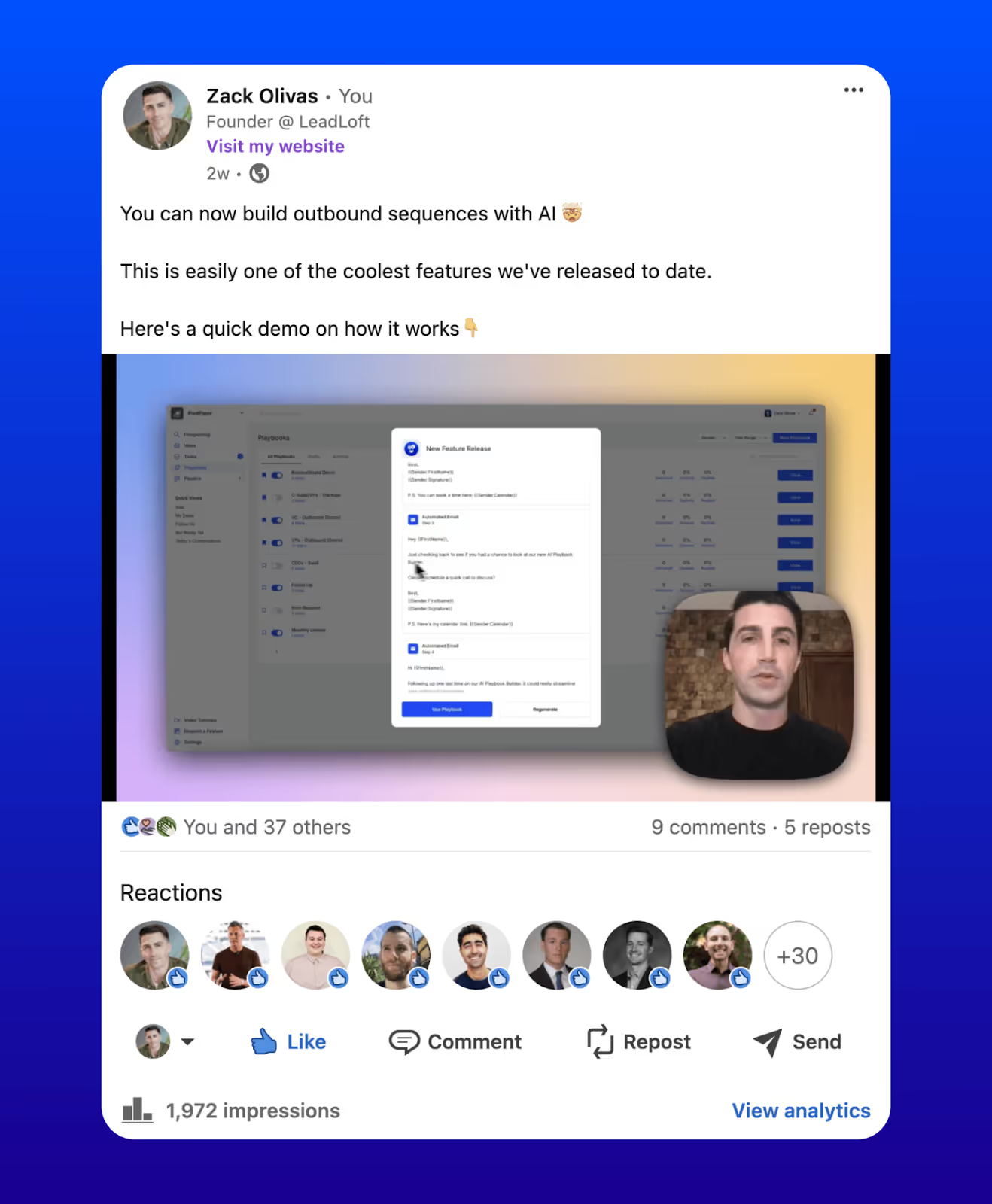
Posting on LinkedIn and promoting on LinkedIn is another channel we're starting to experiment with.
We haven't found tons of success with it yet, but we have found it to be somewhat easy to get our name out there and to get people asking about us.
The important thing about LinkedIn posts and promotion is that it's really difficult to track the actual results from this kind of activity.
So when you're getting started, I think it's okay for you to experiment posting on LinkedIn and promote what you're building.
I'll just be careful about getting too addicted to it and getting too distracted.
We all know to some degree there's something about posting on LinkedIn that's fun, and getting more followers is fun, but it might not actually help scale your business.
This is especially true if your LinkedIn audience isn't the customers you're purposely selling to.
However, if your LinkedIn audience is the audience you are trying to sell to, maybe from a past job, then LinkedIn might be something worth investing more time into.
But again, and I just want to reiterate one last time, be careful about LinkedIn taking up too much of your time because it's a channel that can be really fun but might not yield all that many results when it comes to customers.
And if you’d like to follow our progress on LinkedIn, feel free to connect with me on LinkedIn here.
12) Affiliate Programs

Our affiliate program was probably one of the least successful marketing efforts we've launched to date.
The result was essentially people from other countries signing up, bidding on our brand key terms, and then trying to get paid out for stealing our own organic traffic.
It mainly just caused problems for us and really never resulted in anybody working to acquire new customers on behalf of LeadLoft.
I also think affiliate programs ultimately rely on the size of your customer base.
If you have 200,000 customers, launching an affiliate program might be an amazing channel for you to scale up.
But if you have 1,000 or even 5,000 customers, it's going to be difficult for your affiliate program to really scale up, especially since a lot of these customers just aren't that incentivized by a small 10% or 20% affiliate commission.
Nevertheless, we are still trying to make this work, but we're looking to invest in this in the form of discounts for our customers as opposed to payouts.
We find that's actually more valuable than payouts, so we're planning to scale this up for current customers who love LeadLoft and are already referring us to their friends and colleagues.
Other Channels Not Mentioned
And here's some other channels we have yet to test, but they're worth noting that some companies do find success with them:
- Conferences
- Podcasts
- Branded Features (Scheduling Links, Chat Bots, etc.)
- Product Hunt
Although our team has not yet experimented with these channels, I want to make sure I listed them out so you're aware of the other options out there.
Wrapping Up
So there you have it. Those are all the channels we've used to acquire our first 100 customers.
Hopefully you found it helpful, and if you do have any questions or you'd like help setting up cold email and LinkedIn outreach, please book a time with our team here.
We're always looking to help other startups whenever we can.



.avif)

.avif)
